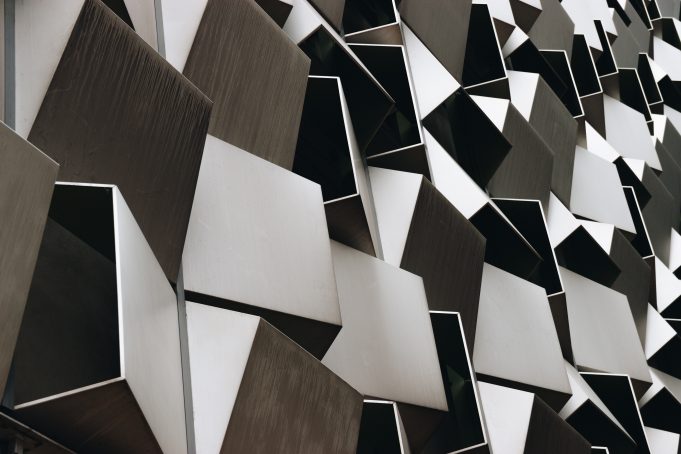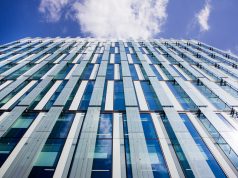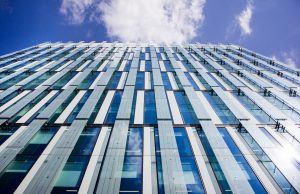Metal finishing refers to processes that will alter the surface of a metal. The main aims of metal finishing processes are:
- To protect the metal against corrosion and wear and tear, and
- To improve its appearance.
There is a range of different metal finishes available, and some are more protective or more aesthetic than others.
You can apply some of these finishes to remove surface layers or reshape surfaces. Other metal finishes involve adding a coating to a surface, or altering the surface in some way.
Metal finishing techniques include:
- Grinding and milling
- Electropolishing
- Sandblasting and shotblasting.
- Electroplating
- Galvanising
- Hot blackening
- Case hardening
- Anodising
- Polishing
- Mass finishing
- Brushing
- Painting
- Powder Coating.
Some of these finishes will achieve similar-looking results as each other, but are in fact quite different.
Choosing the right type of metal finish depends on various factors, including budget and the intended end-use of the metal surface you are applying a finish to.
Grinding and Milling
Grinding and milling metal finishing are abrasive techniques, which alter the surface characteristics of a metal.
They are suited to processes such as mould-making, where precision shapes are essential, or for producing a stock finish to metal items, prior to a more decorative finish.
The finish you get with these methods will vary depending on type of machinery you use.
Grinding will deliver more precise results.
Electropolishing
This is similar to electroplating (see below), as it uses electricity and chemical reactions. Here, you submerge your substrate in a bath containing electrolytes.
These transform it into an anode.
The bath solution then acts to remove ions from the substrate, leaving a smooth surface behind that is free of irregularities.
Sandblasting and Shot blasting
These are abrasive methods, where you propel small, hard particles at a metal surface.
Both are pre-finishing techniques, cleaning surfaces of dirt, grease, oil and other elements before applying metal finishing.
Electroplating
Electroplating or metal plating is a technique that involves submerging a metal substrate (surface material) in a bath which has a metal current passing through it.
In the bath is a solution containing metal ions of the coating material. Once you submerge the substrate in the bath, it acts as a cathode, which is a negatively-charged electrode.
Because the ions in the bath solution are positively-charged, this will attract them to the substrate, depositing them onto it.
The coating layer is normally nickel, chrome, zinc or cadmium, but may also be silver or gold, for decorative functions.
You can apply electroplating to most metals. It is a durable finish, offering improved resistance to corrosion, with strong good aesthetic quality.
Galvanising
Galvanising is a process that adds a protective zinc coating to iron and steel substrates.
Its main purpose is to provide protection from corrosion. It gives a protective seal against moisture, water and other airborne elements, and it helps prevent galvanic corrosion occurring.
A key property of zinc is that it corrodes very slowly, which means that as a coating, it offers an extended life to base metal substrates.
There are three main methods for galvanising:
- Hot dip – dipping the substrate into a hot zinc bath
- Pre-galvanising – similar to hot dip, but usually on steel sheet products
- Electro-galvanising – an electroplating method of galvanisation.
Various industries and sectors use galvanisation, including construction, automotive, construction and agriculture.
Hot Blackening
This specialist metal finishing method creates a black matte finish for metal parts.
It involves applying a thin, black oxide coating to the substrate surface. To do this, the metal part must travel through various tanks containing cleaning agents, caustic materials and coolants.
This process is normally used on smaller parts, in large batches. It is used in the automotive industry, on firearms, and in military applications.
Case Hardening
This method protects metal surfaces by making them harder. It is a metallurgical process, which modifies the surface of the substrate.
A common case hardening process is carburising. Here, you pack a low-carbon metal, such as iron, within a high-carbon substance, then heat up the surrounding pack to encourage carbon to migrate to the surface of the low-carbon surface.
The result is the formation of a thin surface layer of high-carbon steel.
It is used on various parts and bearings.
Anodising
This is a process that applies to aluminium specifically. It is an electrolytic process, for use on aluminium and aluminium alloys.
You immerse the aluminium in an acid electrolyte bath, through which an electric current passes.
The aluminium acts as an anode. Oxygen ions released from the electrolyte combine with the aluminium atoms on the substrate, in a highly-controlled oxidation process.
In effect, this enhances a naturally occurring phenomenon, where the oxide on the aluminium’s outer layer becomes resistant to both corrosion and abrasion.
This process extends the lifespan of aluminium parts and surfaces and gives them an improved appearance.
Polishing
There are various polishing techniques, which give metal products and surfaces smooth, even finishes.
Polishing can remove surface oxidation and enhance appearances, while preventing corrosion.
It evens out the surface of the metal, using abrasive belts or discs, which remove pits, scratches and mill scale.
The finish you get with polishing is brushed or lined, depending on the grade of abrasive you use.
Buff polishing uses a rotating cloth wheel, or mops, plus a fine, abrasive compound. This can produce a variety of finishes.
You can apply circular polishing techniques to sheet metal to create repeated, decorative circular patterns.
Mass Finishing
Also known as mechanical surface finishing, this is an economical metal finishing technique that you apply to parts in bulk.
It can involve several processes, including edge-breaking, smoothing, cleaning and polishing.
Mass finishing techniques can involve placing components together with shaped pellets in a tumbler mechanism. This type of process smooths out the components.
Brushing
As a metal finishing technique, brushing leaves metal substrates with uniform finishes.
Using an abrasive wire brush or belt, brushing creates a consistent, parallel grain surface on the metal. It can also create slightly rounded edges that run perpendicular to the grain.
Effectively it merges grinding and buffing techniques to smooth out metal surfaces, leaving them pristine.
The result is a distinctive look, combining metallic lustre with very fine pattern lines.
The most common applications for brushing are decorative. It is not a protective finish, and can in fact leave surfaces more susceptible to corrosion.
Painting
A low-cost way of increasing the surface protection of metal, and providing a decorative finish, is with paint.
There are various general purpose spray paints for metal, which offer properties such as heat resistance, or to help harden surfaces.
Liquid paints for metal finishing come in a broad range of colours and are convenient for providing a thin outer layer to metal substrates.
However, there are disadvantages to paint as a coating. It can be hard to apply uniformly, without requiring several coats, and therefore be time-consuming. Paint does not offer the same long-term, durable protection as other finishing methods.
Also, paints contain solvents to help disperse and dissolve pigments, resin and other components in their makeup.
This makes paints environmentally hazardous, containing significant amounts of volatile organic compounds (VOCs).
Powder Coating
As an alternative to liquid paint, powder coating has many similar properties, but it is more versatile and durable. It also has environmental advantages over liquid paint.
Powder coating is applied dry, via an electrostatically-charged spray. This ensures a rapid but even application.
Once applied, you then bake the powder coating in an oven. This cures the coating, melting it and causing it to fuse into a hard outer shell.
Unlike paints, you can normally achieve a good, even outer coat with one layer of powder coating.
There is minimal waste, since any coating you overspray, you can collect and reuse. And powder coating does not contain solvents, making it safe to handle, transport and dispose of.
Powder coating comes in various forms, making it widely-used in different industries, including construction and architectural projects, automotive production, and in a broad range of consumer goods.
Which are the Best Metal Finishing Techniques?
This largely depends on the end application. Some popular techniques, such as electroplating and galvanising, are good where protection from corrosion is the main concern.
Others, such as brushing, are really for decorative purposes only.
Some are suitable for mass-finishing of components, while others are for more specialist applications.
One solution is to choose a metal finishing technique that offers multiple advantages, such as powder coating.














